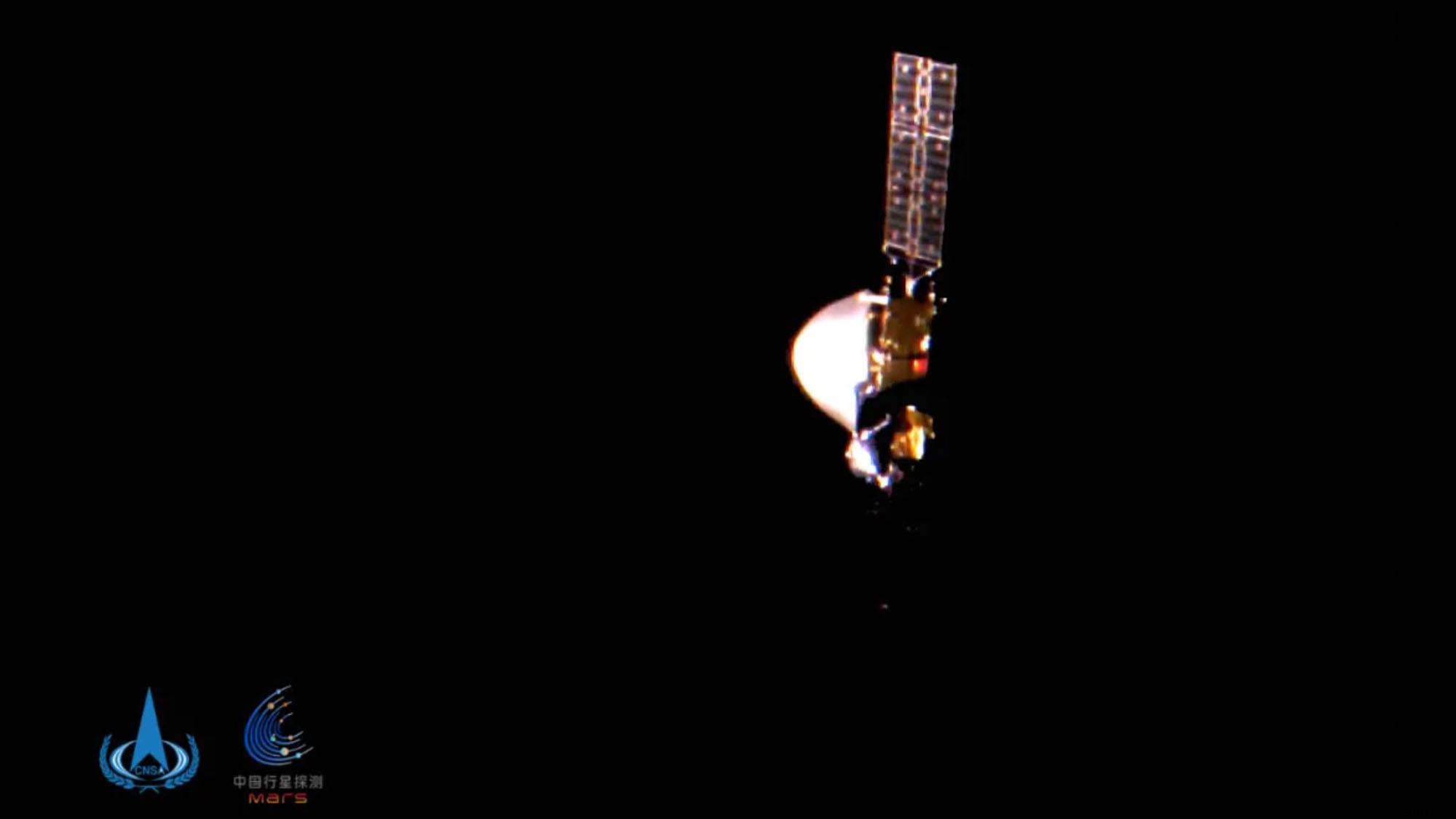The Chinese mission Tianwen-1 is due to enter Mars orbit on February 10, before attempting a landing in May. If successful, the surface of the Red Planet will no longer be exclusively American "territory".
On July 28, China launched its long-awaited Tianwen-1 mission to Mars. It is planned to place an orbiter around the planet and deploy a surface rover. This will be a first for China, which has already landed on the Moon three times. If successful, it will be only the second country to land a craft gently on the red planet. So far, only the Americans have succeeded in doing so. Note that since the 1960s, more than half of Martian missions have ended in failure.
The main objective of the mission will be to probe the distribution of water ice in the Martian subsoil. It will also be about mapping the geological structure of the planet.
That being said, it was normally expected that the Tianwen-1 mission would reach Mars in February 2021. The China National Space Administration (CNSA) has just specified the date.
According to a recent release, Tianwen-1 – which was about 130 million km away from Earth and 8.3 million km of Mars on January 3 – should enter orbit on February 10. The five-tonne spacecraft will then fire up its engines, so as to slow down enough to be captured by the planet's gravitational pull. Once placed in orbit, the Chinese probe will be placed approximately 190 million km from Earth , after traveling a long journey of approximately 470 million km , according to the CNSA.
Note that given these enormous distances, communication transfers will be about ten minutes late . Real-time control of the ship will then be impossible. The latter will therefore have to execute the commands that have been previously transmitted to him.
Li Zhencai, deputy commander of the project, told Chinese media that preparations for this insertion into Mars orbit are underway.“ We plan to complete all orders with the Beijing Aerospace Control Center before January 24 ” . In the meantime, a fourth trajectory correction maneuver was to be performed soon.
Once in orbit, the Chinese rover will remain attached to its orbiter until at least May , before attempting a landing on Utopia Planitia. This vast plain, already visited by the American Viking 2 mission, extends in the northern hemisphere for approximately 3,200 km.

Recall that Tianwen-1 is one of three spacecraft making their final approach to the red planet. The Hope probe, developed by the United Arab Emirates, is expected to reach Mars a day before Tianwen-1 on February 9. Placed in orbit, the Hope probe will aim to study the Martian atmosphere and climate.
The American rover Perseverance, for its part, will attempt a landing on February 18 in the Jezero crater to search for possible traces of past life.